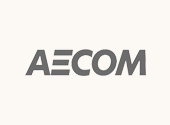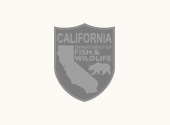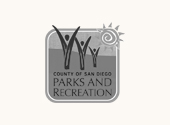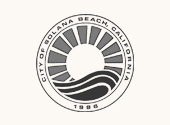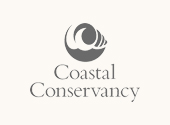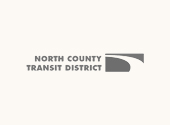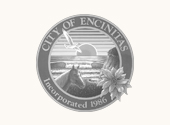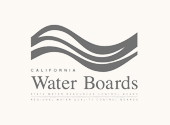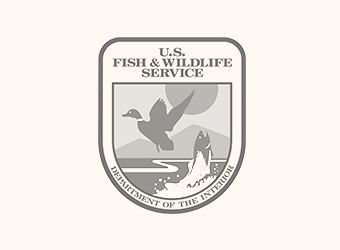Our Conservation Projects
San Elijo Lagoon
Restoration
Wetlands Revived
Tidal flow is improved. Enhanced wetland habitats and new trail connections are benefiting nature and the community!
This project is one of the most extensive wetland restorations in California. With restoration complete, we are monitoring now and through the next 50 years — ensuring that what we designed works as the sea level rises and our climate changes.
Our San Elijo Lagoon Restoration project includes new mudflats and tidal dredging in the East + Central + West Basins of San Elijo Lagoon Ecological Reserve. The half-cent Transnet tax, rather than donations, funded this $120 million undertaking. Mudflats are a vital habitat for many animals – especially waterfowl. Without restoration, we would have lost these critical habitats— now restored and enhanced for sea level rise.
Keeping lagoon lands and waters healthy means increasing tidal circulation – a natural process that modern infrastructure had nearly halted. But wider bridge spans, and enhanced tidal channels, are now delivering tidal flow farther and deeper into San Elijo Lagoon.
New trails connect our communities! These paths provide more experiences for Nature Collective visitors of all ages.
Doug Gibson, Executive Director | Principal Scientist
San Elijo Lagoon Restoration addresses our future conditions. We restored the lagoon for enhanced water flow and anticipated sea level rise. And we took actions to leave the stepping stones for current and future species.
Frequently Asked Questions
1. 50-Year Restoration Monitoring Plan
We are measuring the success of the restoration project in two broad categories. First, the project caused no adverse environmental impacts, and second, the project measurably improved the San Elijo Lagoon wetland ecosystem. We have many specific monitoring requirements that help us determine if the project meets these two criteria for success.
We look at the project as taking place in two general areas—first, the wetland itself—second, the local coastal marine environment where the project provided beach replenishment sand.
We are monitoring 13 key variables within the wetland to ensure the project caused no adverse impacts and improved the wetland ecosystem. To do this, we compare measurements we take within San Elijo Lagoon today to measurements taken in San Elijo Lagoon before the project began. We also compare San Elijo Lagoon measurements to those at three other “reference” wetlands in Southern California. Independent experts chose these other wetlands as the best indicator wetlands in Southern California.
In short, measurements in San Elijo Lagoon must measure as good or better than before the restoration project began. In addition, for the project to succeed, measurements in San Elijo Lagoon must measure better than at least one indicator reference wetlands for many consecutive years.
Within the marine environment, we monitor for five years to see if there are any noticeable impacts from the beach replenishment component of the project. We intentionally designed the project to place less sand on the beach than would cause any effects. The monitoring is a rigorous check of those assumptions to ensure that we are also protecting the valuable coastal resources offshore the lagoon.
We measure the habitat types in the lagoon by acreage to ensure we have desirable amounts for each critical habitat type. We also measure how thick the vegetation cover in these habitat types is so that we do not have underperforming habitat areas. In addition, we pay special attention to two particular habitat types. Eelgrass is an underwater plant that strongly indicates high-quality aquatic habitat. California cord grass is a low marsh plant that is a strong indicator of high-quality habitat for the federally endangered bird, the California Ridgeway’s Rail.
You can experience these habitats and plants firsthand from the new pedestrian bridges that connect the Nature Center Loop Trail at San Elijo Lagoon to the Pole Trail. When on the pedestrian bridge, look into the main channel to see if you can spot the patches of eelgrass–try to identify the large areas of cordgrass along the Pole Trail and see if you are lucky enough to spot a federally endangered California Ridgeway’s Rail!
We also measure the diversity and abundance of birds, fish, and invertebrates in many lagoon areas, and we measure the water quality continuously at multiple locations in the lagoon channels.
Once available, we will post the annual reports and associated datasets on this webpage. See below for currently available reports and datasets. In addition, we will also host a yearly presentation describing the monitoring activities and results. Please subscribe to our mailing list to receive invitations to attend our annual presentation.
2. The Needs and Goals of Restoration
Tidal flow in and out of the Lagoon was restricted. The restriction resulted in poor water quality compared to a system with increased tidal flow.
As sea-level rise continues in the future, without our action, we would lose many of the valuable habitats that already existed in the wetland. The restoration project increases water flow in and out of the Lagoon and modifies the wetland’s topography to increase its resilience against sea-level rise.
The most significant part of the restoration was making the channels in the lagoon wider and deeper and extending them farther into the East basin. This change allows up to three times more water to flow in and out of the lagoon twice a day with each tide cycle.
As sea level rises, areas within the lagoon will transition to new habitat types. We designed areas of San Elijo Lagoon to provide a ramp for survival as the sea level rises, gradually changing to higher and higher elevations. So, plants have adjacent locations they can grow in as the sea level rises.
The monitoring component of the project is how we determine if the restoration plan is working. Each year we collect numerous measurements in the lagoon to track how it is functioning compared to how the wetland performed in the past compared to other well-functioning wetlands in Southern California.
Adaptive management (rapid response to unexpected outcomes) is critical and included in our budget. As we did before and during construction, we will continue to monitor the system after construction to identify any unintended consequences and possible solutions.
We already see strong signals of a healthy salt marsh than before the restoration project. However, we have ten years to achieve broad measures of success across all of the measurements we take within the lagoon.
If you are interested in helping indigenous habitats grow and thrive, we host weekly and monthly volunteer opportunities. Visit naturecollective.org/volunteer to sign up.

